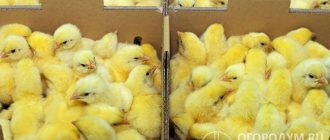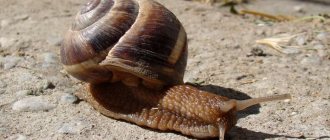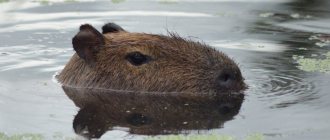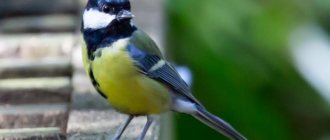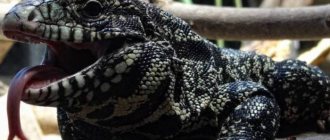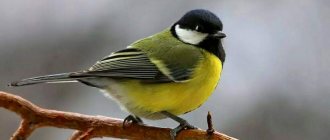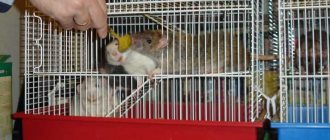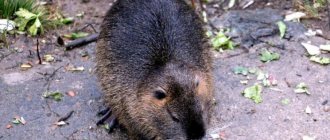Pineapple is a fish with an amazing structure and lifestyle. Translated from ancient Greek Ἀνάβασις means “ascent.” The name accurately reflects the way of life of the slider fish. She can not only crawl over land in search of a reservoir, but even climb trees. The unprepossessing appearance (the fish looks like a perch or chub) compensates for its unusual behavior for a fish. Pineapple is not a common inhabitant of aquariums, but exotic lovers are ready to maintain a species aquarium for the sake of this unique ancient fish.
Story
In 1792, the persimmon was described and systematized by the German naturalist and ichthyologist M.E. A flea called Anabas testudineus. The fish belongs to the creeping family, the genus Anabass, which includes 2 species (Anabas testudineus and Anabas cobojius). In Europe, the Anabass appeared in the exhibition of the London Zoological Park in 1870. The creeper fish arrived in the USSR only in 1960. In some countries, there are fish farms that breed Anabas not only for sale in aquariums, but also for tasty meat.
Diet of the creeper fish
Pineapple is a very aggressive predator that in the wild feeds on small fish and various small animals, such as earthworms and invertebrates.
Feeding it in an aquarium is also easy. You can give:
- live foods such as shredded raw beef or small fish;
- plant foods such as rice and greens;
- dry or granular substitutes.
It is worth noting that sliders have a very good appetite; one might say that they are gluttonous. Therefore, be prepared for the fact that they will need a lot of food.
PETILIA-CONTENT BREEDING DESCRIPTION PHOTO FEEDING.
TERNATION CONTENTS BREEDING COMPATIBILITY DESCRIPTION FEEDING.
Habitat
Both fish species are native to South Asia. Anabas testudineus in Southeast Asia, including southern China, Indonesia, Malaysia, Burma, Laos, Vietnam, Philippines, Sri Lanka. And Anabas cobojius in India and Bangladesh. Pineapple prefers shallow, well-warmed fresh or brackish water bodies.
Fish are found in canals, ponds, swamps and estuaries, and flooded rice fields. Pineapples are not only found in stagnant bodies of water. Adults can live in slow-moving rivers and streams. They tolerate turbid water with low oxygen content well. They prefer shallow bodies of water with abundant vegetation.
During the dry season, the fish can bury itself in the mud to a depth of 1 m and remain in a damp “niche” for several weeks.
Interesting Facts
The main interesting feature is movement on land. During dry periods or when there is a shortage of food in their native lands, the creeper fish comes to the surface of the earth to hunt. Pushing off with its tail, assisted by its front and rear fins, as well as its spiked gill covers, it is able to cover a distance of 100 meters in an hour. Even more facts:
- Pineapple is timid and cautious; it comes out to hunt only in the dark.
- In Asia, fish is in demand and has commercial value due to its tasty and healthy meat.
- Bred by aquarists, in captivity it does not grow more than 16 cm.
- Very unpretentious and adaptable, one of the first tropical fish brought to Europe.
- Capable of breathing the atmosphere for up to 8 hours.
- Buried in a damp muddy substance, it can remain without water for 2 days.
- In extreme cases, the climbing perch fish burrows into loose, damp soil and hibernates for up to two weeks.
There is one more fact, but it has not been confirmed, but rather has been debunked - the ability to climb a tree. Why does she need this? One explanation is that the fish climbs the trees to drink the juice, the second is that birds who love the meat of the Pineapple accidentally carry them onto the branches of plants. There is no consensus on why and why the poison dart creeper ends up in trees.
Structural features and appearance
In nature, length of the common climbing persimmon reaches 20 cm, the Gangetic persimmon is somewhat larger - up to 30 cm. The body shape depends on the age of the fish and nutrition.
Pineapple has a dense, elongated body with an almost flat back. Slightly compressed from the sides. The head is large, wedge-shaped with a large mouth , which appears even larger due to the dark stripes framing the mouth opening and going down to the gill covers. The eyes are large and protruding with a reddish-orange stripe around the pupil. The fish can roll its eyes like a chameleon, which provides a good view.
The gill covers are solid and have large sharp serrations along the edges, which help the fish move through trees. The fish uses them like a climber with an ice ax, clinging to the slightest irregularities. Thanks to these spines, the persimmon is released from the nets, breaking the strong fibers.
The dorsal fin is long with sharp spines. The pectorals and anus are muscular with hard, spiny rays. The abdominal ones are located under the base of the pectoral ones. With their help, the fish crawls quite briskly across land. The caudal fin is rounded.
The body color is dull – gray-brown or olive. The back is darker in color. In young fish it may have an orange coloration. The abdomen is yellowish-white. The sides are covered with oblique stripes (up to 10 pieces), consisting of small dark spots. In young fish, the stripes are clearly visible; with age, the spots fade, and the fish acquires a uniform color.
Large single dark spots are visible on the gill covers and caudal peduncle. At the back of the head there is a large red-brown spot. The body is covered with large, jagged scales, and the base of the dorsal and anal fins is small.
Pineapple belongs to the labyrinthine genus. It is the labyrinthine organ that allows fish to travel on land, as it provides breathing with atmospheric air.
Pineapples exhibit sexual dimorphism. Males have a wider head. During the mating season, its color intensifies, the fins and the spot on the back of the head become red. The female is smaller and fuller, especially in the abdominal area. It has a more modest coloring.
Unusual Survival Abilities
The slider fish is perfectly adapted to the climatic conditions prevailing in its homeland. Individuals are always ready for the complete or partial drying out of a reservoir during the dry season. It is in this case that they use their rare survival skills, perfected over thousands of years of evolution.
If a lake or river dries out slowly, the climbing perch may burrow deep into the mud, expecting the water to return soon. Individuals create a durable cocoon for themselves that can retain moisture inside for a long time. But if the water level goes down at a tremendous speed, the fish’s inner instinct strongly recommends changing its habitat.
A specific epibranchial organ, called the labyrinth organ, serves the climbing perch for breathing clean air. Thanks to him, the creeper can remain without water for up to several days . Using their developed fins, individuals often crawl ashore and can even climb trees. In this they are helped by miniature spines on the gill plates, which promote enhanced adhesion to any surface. The only reason is to find a habitat suitable for relocation. It is in this way that mass resettlement is carried out to new reservoirs from drying up ones.
The slider fish is able to move on land thanks to its spiny fins.
Conditions in the aquarium
Pineapple is a fish that can adapt to life in a home aquarium, but this will require certain conditions:
- Selection of capacity . A couple of crawlers require an aquarium of more than 100 liters. It is optimal to keep perches in a group of 4-6 individuals. There should be an equal number of males and females in a flock, or females should predominate. The container must be tightly closed with a lid or glass so that the fish cannot leave the aquarium.
- Water parameters : temperature – +26-30°C; hardness – 20°dH; pH – 6.8-8.0.
- A good filter , since voracious persimmons leave a lot of waste products, and a water heater. Aeration is desirable, but not necessary. You need to change up to 20% of the water weekly (read more about how to properly change the water in an aquarium).
- Soil . The bottom of the aquarium is covered with fine river sand.
- Vegetation : bottom and floating plants. The most popular plants for an aquarium with Anabass are: hygrophila, cryptocoryne, limnophila, rotala, vallisneria, fern, etc. They will create dense thickets, but the plants need to be planted in such a way that there are “clearings” for swimming. Floating plants provide the necessary shading that crabapples love.
- Shelters - driftwood, grottoes, stone slides, ceramic shards. Decorative elements decorated with Java moss, monosolenium tenerum, and weeping moss will fit into the aquarium design.
Compatibility
Anabassoid specimens can be kept in a species aquarium, that is, in pairs. These are active and extremely shy, uncooperative fish. Neighborhood with large cichlids is allowed. They eat slow and small inhabitants. During the day they prefer to hide in shelters. The pugnacious nature does not favor keeping in packs. Unlike adults, young individuals quickly get used to their new habitat.
You can try to accustom a group of Anabas to each other. To do this, more fry are placed in a large tank. Sometimes it is possible to raise individuals that are quite good with their fellows.
Just do not forget that the aquarium must be covered with thick glass. The slider jumps well, pushing off the bottom with its powerful tail.
Breeding and reproduction
Pineapple reaches sexual maturity at 1.5 years. For breeding to be successful, the male and female should be placed in a spawning tank.
During spawning, it will need to maintain a temperature within +25-30°C, acidity - no higher than 7.5, and hardness - no more than 10.
In addition, frequent water changes are necessary.
Egg spawning occurs in the middle water column or on the ground surface. The female lays about 4,500 eggs, which float to the surface and drift. After this, the parents must be returned to the community aquarium, since they do not care for the offspring. After a day, the fry hatch into the light. Already on 2-3 days they are able to swim and feed on their own. At first, rotifers and “live dust” are excellent food options.
Keeping crabapples is not difficult. Even a beginner can cope with the task, especially since the fish can tolerate even extreme conditions - high levels of ammonia and nitrates/nitrites in the water. Pineapple is one of the most exotic inhabitants of home aquariums with interesting behavior and lifestyle. Under appropriate conditions, they will delight with their presence for a long time.
Aquarium fish: how to make the right choice
People who decide to have aquarium fish are faced with a rather difficult question - what kind of pet to choose. If you search well, you will find that you will have to choose from almost 2,000 species of a wide variety of freshwater fish. On this page we have tried to collect all the necessary information about the aquarium fish - the Anabass. If you have never had an aquarium before, you don’t need to choose based on the principle of a beautiful fish and an ugly fish. It is necessary to take into account a lot of variables: what kind of food it prefers, the temperature and composition of the water, whether it is a predator or not, whether it is dangerous for humans, whether it gets along with other species, and many other interesting things. If we classify conditionally, we can distinguish two large groups of fish:
- Easy-to-care fish, not at all demanding of environmental conditions, can survive even in unfavorable situations. They have high endurance by nature, because they live in places where water constantly changes its characteristics or even disappears for a while. However, for health and beautiful appearance, such fish need to be provided with conditions as similar as possible to their natural habitat.
- Difficult to care for fish, most of them belong to tropical latitudes. For them, you need to create special conditions in the aquarium, again as similar as possible to the area where they live in nature. These species rarely breed in captivity, so they are brought from the wild.
For a novice fish breeder, it is better to choose one of the most unpretentious species. In addition to the prospect of not being able to cope with caring for a “capricious” fish, there is a danger of introducing an exotic disease that can harm the rest of the flora and fauna of the aquarium. If you like the aquarium fish Pineapple, carefully read the characteristics, character, feeding, care and breeding of these fish.
Pineapple photo
Diseases
Pineapple is susceptible to:
- Columanriosa. A cotton-like coating appears on the body, the fins are pressed tightly together, the fish sways for a long time in one place and becomes lethargic. Occurs in an overcrowded aquarium. Accompany the treatment with a gradual decrease in water hardness and daily fluid changes. You can reduce hardness by adding melted or boiled water. Treat fish with methylene blue or phenoxyethanol.
- Papillomatosis. Small tumors appear on the fish's body. Treatment has not been developed; sometimes fish recover on their own.
- Tuberculosis (mycobacteriosis). The disease is treated in the early stages with an antibiotic mixed with fish food. Mycobacteriosis is accompanied by loss of appetite, fading of color and lethargy.
- Ichthyophthyriasis. The skin becomes covered with white dots, the fish becomes restless and loses its appetite. Treat the disease with malachite green or quinine hydrochloride by increasing the water temperature.
Carry out treatment by removing the sick individual. Remove the Pineapple from the aquarium using a plastic or glass container.
Walking to the pond
In India and the Philippines, when water bodies begin to dry up due to the heat, after the water has completely disappeared, you can easily find anabasa hiding in the remains of silt. Other travelers have had the opportunity to observe hundreds of these small fish, busily scurrying around in the liquid mush left over from the previous reservoir. When the silt begins to dry up, all these living creatures go to look for a new place. It’s an amazing sight when a whole school of fish crawls out of a dry pond and begins to move in different directions, despite any difficulties and obstacles encountered along the way. Many people die on this thorny path. Most often, climbing peregrines traveling on foot become easy prey for humans and birds of prey. “Such wanderings,” said the engineer, “occur mainly at night or before sunrise; I, at least, had to observe these phenomena in the mornings. In addition, I collected several of these traveling specimens into tubs, where I kept them; They spent the day in complete peace, but as soon as night came, they began to try to free themselves from captivity, which they sometimes actually succeeded in doing.” It should also be noted that, if necessary, perches can refuse to travel and simply bury themselves in the silt, digging out wet soil with their snout, and wait there for better times. Depending on the properties of the soil, they hide at a depth of half a meter to a meter, and the top layer of the earth sometimes cracks so much from the heat that it is difficult to imagine how there could be fish underneath it? Pineapples usually lie in a somewhat damp layer, but this layer can also dry out, which does not harm them at all.
Who do they get along with?
Uncooperative, capricious predators pose a formidable danger to neighbors in the aquarium; small and slow roommates will inevitably be eaten. The chance of survival remains with:
- Carp and catfish inhabitants.
- Cichlids.
- Pack.
- Mastacembelus.
- Ctenopus.
To do this, the tank must have a sufficient displacement of at least 200 liters. Representatives of this genus differ in character, just like people. Along with peaceful specimens, there are also aggressive creatures that do not allow any living creatures to pass through for gastronomic purposes. Increasing temperatures increase aggression. Knowing the unpredictable nature of pets, it is recommended to focus on mono-species breeding.
Yandex pictures
What to feed
When it comes to feeding, these scaly creatures are extremely unpretentious.
The following are suitable for lunch for these pets:
- live and frozen food (bloodworms, worms, etc.);
- dry purchased mixtures;
- gelled commercial food.
The ideal option would be to combine purchased mixtures with live food. This will not only make the diet more nutritious, but will also give the fish an opportunity to hunt.
Important! Another important point is the presence of a feeder. In the case of various breeds, such an accessory is worth using, since the faster and more savvy representatives will quickly take their place “in the sun” and eat all the food
If there are a lot of fish in the aquarium, you must make sure that everyone gets food.

